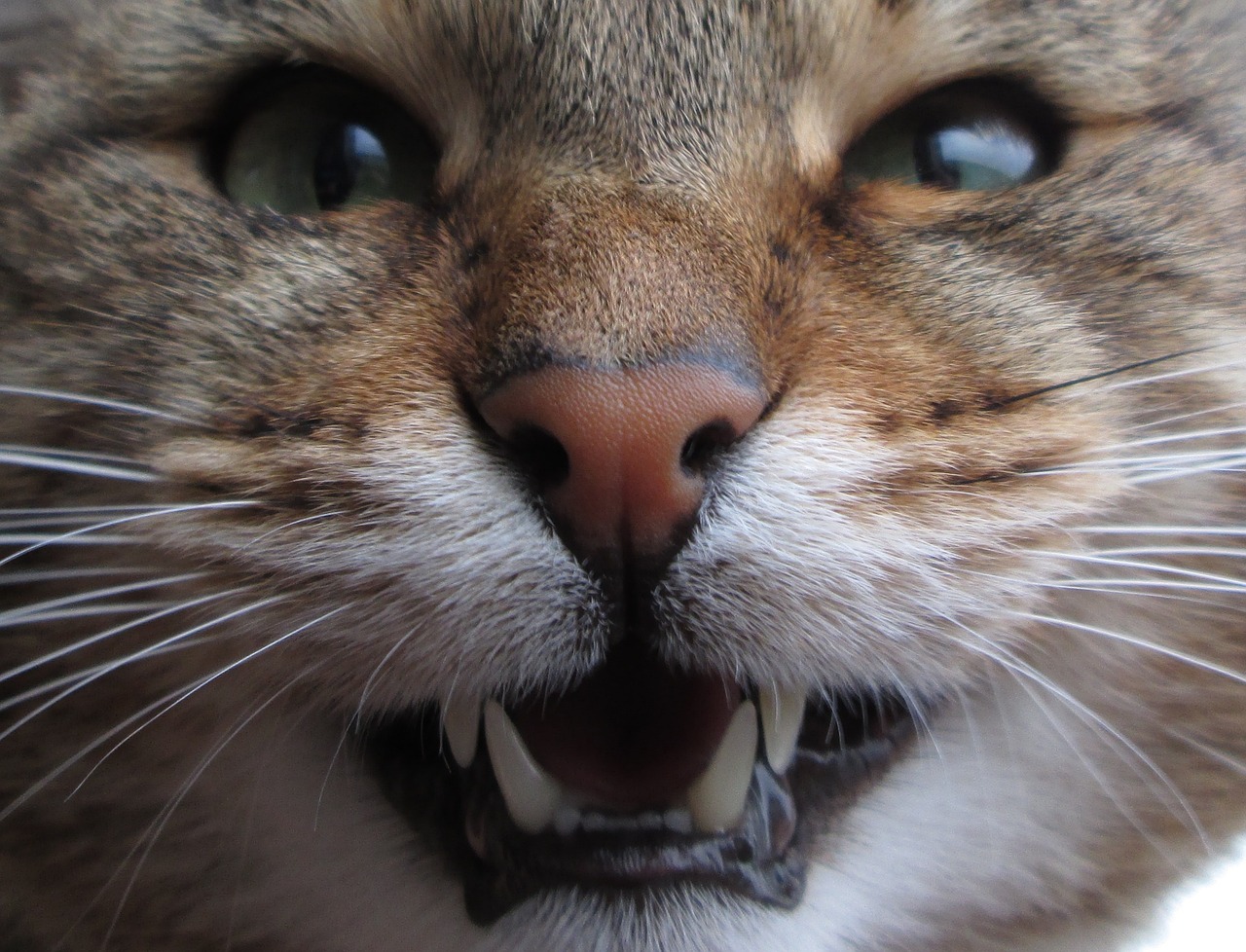Have you taken a look inside your pet’s mouth lately? If not, you could be missing some serious clues into Fluffy or Fido’s well-being.
Periodontal disease affects nearly 85 percent of all cats and dogs over three years of age. In addition to association with liver, kidney and heart disorders, this disease is a frequent source of pain and often leads to poor general health.
What kinds of dental problems do pets have?
Dental disease is as common in dogs and cats as it is in humans. Cavities make up the majority of dental problems in humans, but pets most commonly suffer from plaque buildup. This buildup often causes inflammation of the gums around the base of the teeth (gingivitis), which is a continuous source of discomfort and pain. If untreated, this will ultimately lead to periodontal disease with infection, bone loss and tooth loss.

What is plaque?
Plaque (also called tartar) is a transparent, adhesive fluid composed of bacteria. Plaque begins to form within eight hours after a thorough dental cleaning. When plaque is not removed, mineral salts in the saliva cause hard calculus to form. Calculus is irritating to the gum tissue. By-products of the bacteria also erode the tooth’s support structures, eventually causing pain and periodontal disease.
What does plaque do to the teeth?
If plaque is allowed to remain on the teeth, several things may happen:
- The plaque will mechanically push the gums away from the roots of the teeth and cause degeneration of the bone around the teeth. This is a painful process that allows the teeth to loosen in their sockets and infection to enter the root socket.
- Infection will accumulate in the mouth, resulting in gingivitis, tonsillitis, and pharyngitis (sore throat). Although antibiotics may temporarily suppress the infection, it will return quickly if the plaque is not properly removed
- Infections within the mouth can be picked up by the blood stream and carried to other parts of the body. Kidney and liver infections, as well as infections involving the heart valves, frequently begin in the mouth.
What is periodontal disease?
Periodontal disease is inflammation of some or all of the tooth’s support. When compared to gingivitis, periodontitis also indicates bone loss. If left untreated, periodontitis will cause loose, painful teeth and may lead to an internal disease.
What are the signs?
Halitosis (bad breath) is the primary sign of periodontal disease. Dogs’ and cats’ breath should not have a disagreeable odor. When periodontal disease advances, inability to chew hard food as well as excessive drooling with or without blood may occur.
How is periodontal disease diagnosed?
Bone loss from periodontal disease occurs below the gumline. In order to evaluate the stage of the disease, as well as the best treatment, your pet must be examined under general anesthesia. In addition to a visual examination, X-rays and instruments to measure bone loss are used.

How is dental disease treated?
Treatment depends on the severity of the disease. Grade one (out of four) dental disease is usually associated with plaque and mild calculus or gingivitis. It can usually be treated with consistent oral care at home (daily tooth brushing). Grades two through four will require cleaning below the gumline under anesthesia. With grades three and four, oral surgery is often necessary to scale deep below the gumline or to remove affected teeth.
What is involved in cleaning my pets’ teeth under anesthesia?
Proper cleaning of the teeth requires complete cooperation of the patient so plaque and calculus can be removed. Therefore, anesthesia is required to thoroughly clean the teeth. Although anesthesia always carries a degree of risk, the modern anesthetics and advanced monitoring equipment greatly minimize this risk, even for older animals. Usually, the risks associated with the dental disease far outweigh any risk from anesthesia. In addition, medications may be dispensed for use after the cleaning to treat and help prevent dental disease progression.
What is the prognosis for periodontal disease?
Early dental disease and mild gingivitis are treatable and curable with daily tooth brushing. Periodontal disease is not curable, but can be controlled once treated and followed up with strict home care.
Is there any way that I can prevent dental disease?
Daily tooth brushing is the key to help prevent plaque buildup. Special foods and treats are also available to help control calculus, but are not nearly as effective.
Celebrate National Pet Dental Health Month by scheduling a dental exam for your pet!
